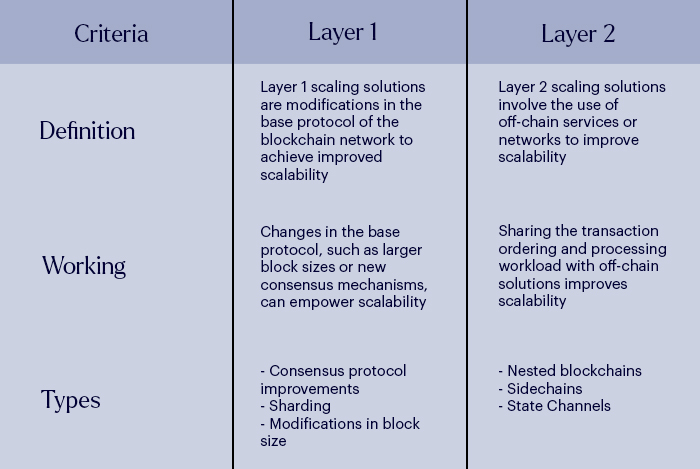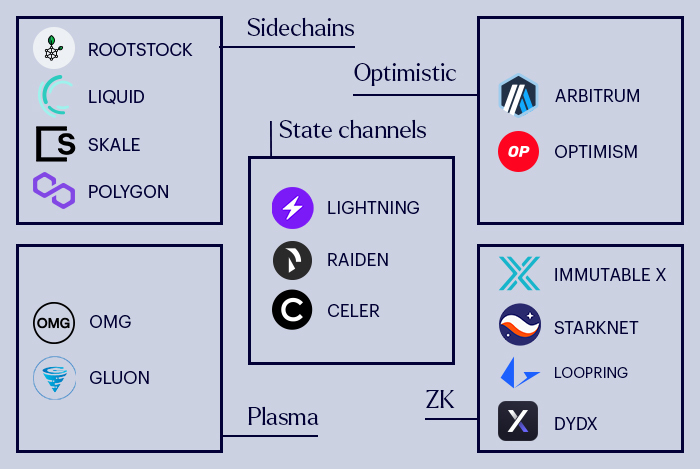Layer 2 Solutions: A Path Towards Scaling
Introduction Scaling
As the cryptocurrency market matured, it experienced massive surges of new users, leading to congestion issues in the sector. The two largest networks, Bitcoin and Ethereum, faced the greatest influx of users, resulting in congestion due to the pre-programmed limits of their underlying blockchains. These blockchains can only handle a certain number of transactions per second. Consequently, users faced high transaction costs and slow transaction speeds during these periods, prompting investors to pay even higher fees to prioritize their transactions. This situation created a snowball effect.
To address this problem, developers have been exploring options to increase the transaction throughput of both networks. These solutions can be categorized into two main approaches: Layer 1 (L1) scaling and Layer 2 (L2) scaling.
L1 vs L2 Scaling
L1 scaling involves modifying the base protocol of the blockchain network to achieve improved transactional throughput. However, modifying a blockchain introduces the challenge of the Blockchain Trilemma. A blockchain should ideally possess three essential elements: security, decentralization and scalability. As developers strive to build a decentralized and secure blockchain, scalability becomes less achievable. Strengthening one element often comes at the expense of compromising another.

L2 solutions aim to address the aforementioned issues by executing transactions within an environment built on top of the main network while verifying them on the main network. This approach allows L2s to function on the corresponding L1 network without necessitating any structural modifications, ensuring that the existing functional aspects of the main chain remain unaffected.
Development of L2 Solutions
Both Bitcoin and Ethereum have embraced L2 scaling solutions and have employed various techniques to optimize their throughput. Developers have the freedom to apply their scaling philosophies, as anyone with sufficient technical expertise can create a second layer. If an L2 solution fails to perform as expected, it will eventually cease to exist, with minimal consequences for the main network.

Consequently, L2 solutions have significantly contributed to the development of both blockchains. This alleviates strain on the main network, enhances efficiency, and attracts new users and capital, ultimately resulting in an improved user experience. These L2 scaling solutions can be categorized into five main types: sidechains, state channels, plasma, optimistic rollups and zk-rollups.
Would you like to read the full report? Our report provides an in-depth analysis of technology, use case, outlook and more. Do you want to gain access to all our research reports? Create an account in our portal.


